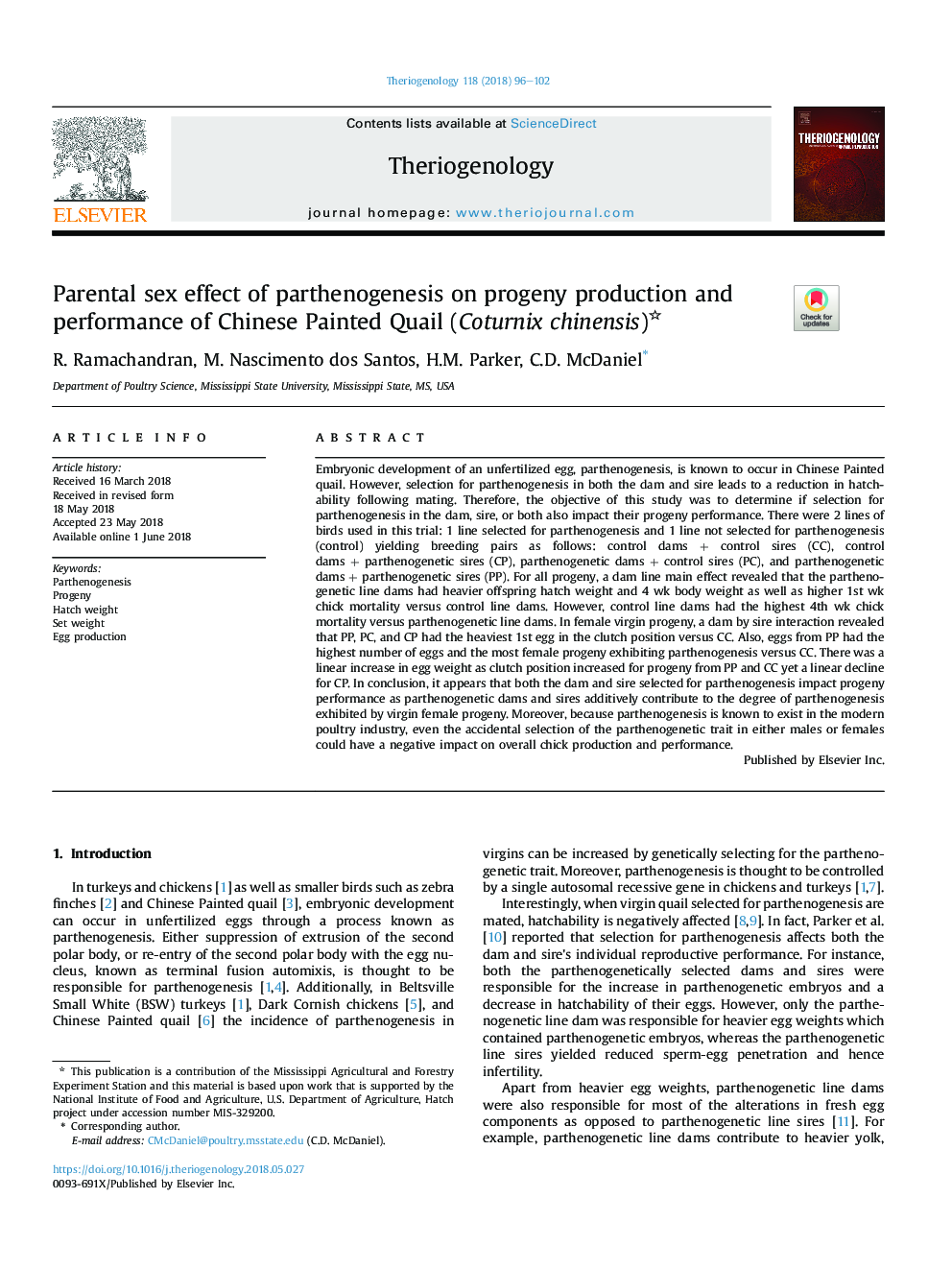| Article ID | Journal | Published Year | Pages | File Type |
|---|---|---|---|---|
| 8426310 | Theriogenology | 2018 | 7 Pages |
Abstract
Embryonic development of an unfertilized egg, parthenogenesis, is known to occur in Chinese Painted quail. However, selection for parthenogenesis in both the dam and sire leads to a reduction in hatchability following mating. Therefore, the objective of this study was to determine if selection for parthenogenesis in the dam, sire, or both also impact their progeny performance. There were 2 lines of birds used in this trial: 1 line selected for parthenogenesis and 1 line not selected for parthenogenesis (control) yielding breeding pairs as follows: control dams + control sires (CC), control dams + parthenogenetic sires (CP), parthenogenetic dams + control sires (PC), and parthenogenetic dams + parthenogenetic sires (PP). For all progeny, a dam line main effect revealed that the parthenogenetic line dams had heavier offspring hatch weight and 4 wk body weight as well as higher 1st wk chick mortality versus control line dams. However, control line dams had the highest 4th wk chick mortality versus parthenogenetic line dams. In female virgin progeny, a dam by sire interaction revealed that PP, PC, and CP had the heaviest 1st egg in the clutch position versus CC. Also, eggs from PP had the highest number of eggs and the most female progeny exhibiting parthenogenesis versus CC. There was a linear increase in egg weight as clutch position increased for progeny from PP and CC yet a linear decline for CP. In conclusion, it appears that both the dam and sire selected for parthenogenesis impact progeny performance as parthenogenetic dams and sires additively contribute to the degree of parthenogenesis exhibited by virgin female progeny. Moreover, because parthenogenesis is known to exist in the modern poultry industry, even the accidental selection of the parthenogenetic trait in either males or females could have a negative impact on overall chick production and performance.
Keywords
Related Topics
Life Sciences
Agricultural and Biological Sciences
Animal Science and Zoology
Authors
R. Ramachandran, M. Nascimento dos Santos, H.M. Parker, C.D. McDaniel,
